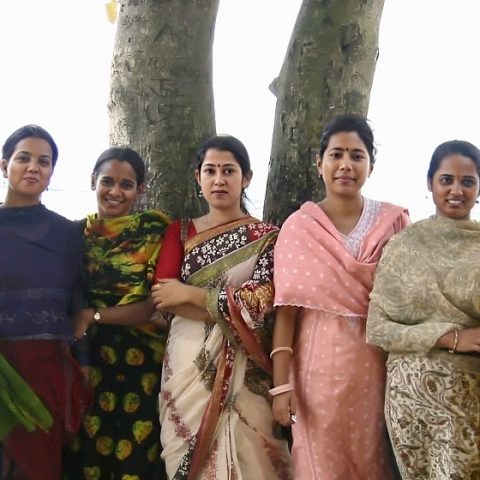Antimicrobial resistance (AMR) is one of the biggest threats to global health, food security and development for which the environment is recognised as an important actor. It is estimated that the annual AMR attributed death toll will reach 10 million by 2050. Poultry is a key driver of AMR in its transmission between the outdoor environment and humans through faecal shedding of resistant bacteria.

Antibiotic susceptibility test of a superbug showing resistance to all last resorts of antibiotics.
The rapid expansion of commercial poultry farming in peri-urban areas creates risk due to the unregulated use of antibiotics in feed and disposal of faecal waste and run-off water. Strict biosecurity practices are absent, especially in developing countries. Regulation, aimed at the poultry farm industry, must be implemented and enforced to decrease the growing problem of AMR.
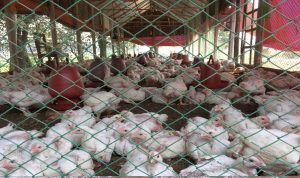
A typical small scale commercial poultry farm in rural Bangladesh.
Poultry Farms: One of the gateways
The rapid expansion of commercial poultry farming in peri-urban areas creates risk due to the unregulated use of antibiotics in feed/drinking water, and the absence of any regulation of the treatment of waste disposal. Faecal waste produced in commercial farms and urban markets is mostly disposed into the environment by ‘hosing down’, and residue water is able to contaminate the surrounding area. Anthropogenic activities such as agriculture, antibiotic residues and wastewater disposal increase the horizontal transfer of resistant genes.
Antimicrobial use (AMU) in poultry farm: Where law is silent
The problem is overwhelming in scale- poultry are the most common domestic animal. 57% of poultry owners reported using over-the-counter antibiotics for poultry in the last six months; 50% of households shared their sleeping area with poultry and 61% of households used poultry faeces as fertilizer.

(left) Same drug used for all species. (right) Local drug used for all poultry.

Drug container with no label mostly used in rural backyard/farms in Bangladesh.
Use of the same drug in all species, coupled with the fact that drugs have no labels specifying the ingredients are very common especially in rural areas. Regulations must be developed and enforced to ensure the prudent use of antibiotics in farm animals and correct disposal of run-off water.
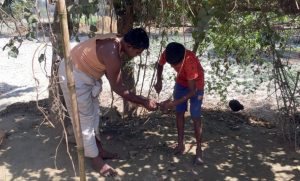
Slaughtering practice with disposal of offals in open space.
Farm Biosecurity: Small Investment, Greater Reward
Farm biosecurity plays a vital role in disease epidemiology and antibiotic resistance. Restricted access and proper waste disposal are the most vulnerable components in farm biosecurity, often very poorly maintained or absent in the majority of small and medium scale farms in developing countries. Contamination of drinking water is also common in rural areas of Bangladesh. 59% of tube well water samples show a concentration of E. coli indicating faecal contamination.
Environmental toll for inadequate biosecurity
The emergence of antimicrobial resistance is a natural evolution in response to antimicrobial exposure.
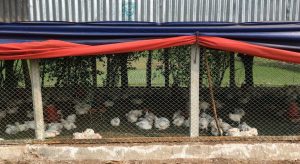
A poultry farm adjacent to paddy field with no waste disposal system in rural Bangladesh.

Exposure of the backyard poultry to the farm waste which is directly disposed in paddy field.
The environment in most of the LMICs is ideal for the rapid spread of AMR. such as high density populations; lack of clean drinking water and poor sanitation infrastructure, dangerously coupled with the availability of inexpensive antimicrobials from over the counter suppliers.

Use of cow dung and poultry pens as fuel in rural Bangladesh.
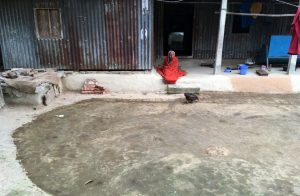
Use of livestock generated waste for mopping yard: way of spreading resistant bacteria.
Inadequate regulation of the release of antimicrobials into the environment through production and manufacturing processes further contaminates the environment opening pathways for the development and spread of resistance in the environment.
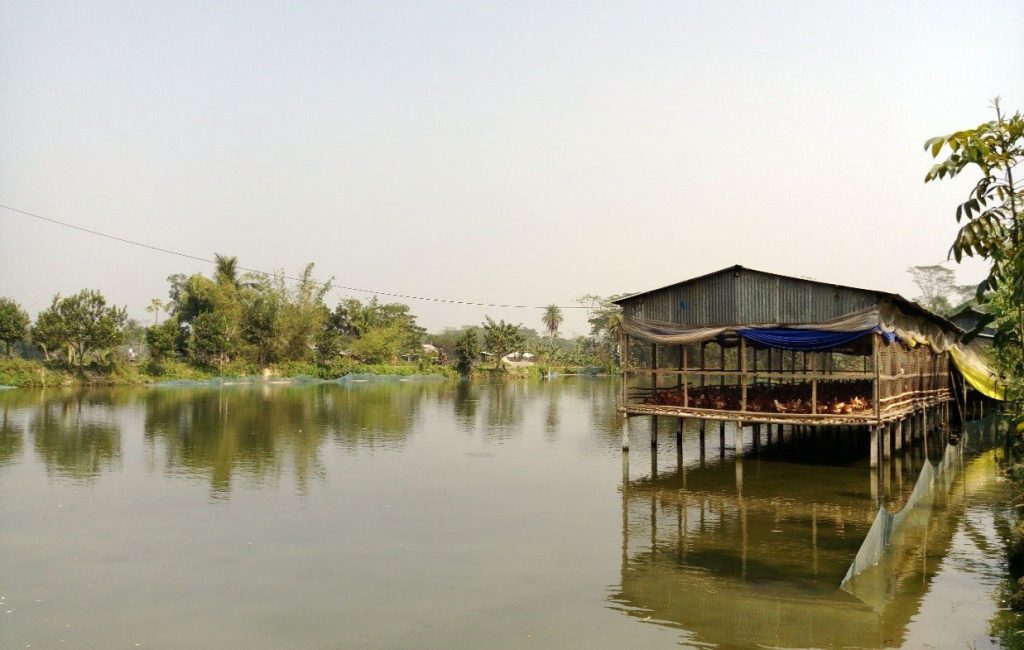
Integrated commercial poultry raising with aquaculture in rural setting

Ducks and Fish are the victims of faulty biosecurity: Photo from the same river

Animals and humans are well connected from ancient times; but precautions must be taken to reduce AMR.
AMR: A natural evolutionary process and control remains here
The process of antimicrobial resistance is not limited to a single factor, instead resistance is a result of interconnected diverse mechanisms all contributing to the rise in AMR. Therefore, multidisciplinary and One Health approaches need to be implemented. The threat can be combated through a centrally managed strategy encouraging increased awareness and action to decrease contamination through better drug control and better management of waste.
One health & planetary health are the key to success. The universal weapon to combat AMR is strong farm biosecurity and public awareness.

Mohammad Aminul Islam PhD, Associate Scientist, LSSD, icddr,b
Member, WHO Advisory Group on Integrated Surveillance of Antimicrobial Resistance (AGISAR)

Muhammad Asaduzzaman, MBBS MPH MPhil, Research Investigator, LSSD, icddr,b
One Health Fellow for South Asia, Massey University, GHES Fogarty Postdoc Fellow, UC Berkeley

